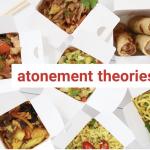Today is finally here! After years of labor, The Cross in Context: Reconsidering Biblical Metaphors for Atonement is officially published!! (This is the second book that I’ve released this fall. Seeking God’s Face was published in September.)
As a way of introducing the book to you, it’s fitting that I post an adapted excerpt from the Introduction. Please share the news with others!
Three Goals of This Book
The Cross in Context has three interconnected purposes.[1]
First, it attempts to guard church unity. It is commonplace to compare the doctrine of atonement to a multifaceted diamond. Christ’s atoning work abounds in significance. Its richness is incalculable. Nevertheless, Christians all too often feel compelled to emphasize one aspect of the atonement over another. In doing so, one picks a “theological team.” Debates about the “most central” or “most fundamental” theory of atonement have long divided Christians.
While some authors attempt to mediate such debates, their explanations might perpetuate the problem. Theologians assume the validity of conventional, systematic theories of atonement. They do not always interact sufficiently with or incorporate the wealth of insight provided by biblical scholars. Such systematic treatises focus more on philosophical assumptions than on the inherent logic of the biblical narrative and its metaphors. Although many authors acknowledge the partial truth of various historical theories, their treatments still lead readers to prioritize one theory over another.
Some debates refuse to die. Pilate killed Jesus, but we theologians sacrifice the atonement.
A second purpose is theological. In light of these disputes, this book seeks to add clarity and cohesion amid the clutter of theories. It shows how biblical writers harmonize the various atonement metaphors that span the canon. As a result, readers will not pit one set of biblical texts against another. This broader perspective of Christ’s atonement is both humbling and hope giving. It can calm the cackle and clatter that stifles genuine dialogue among Christians. It helps to reconcile theological camps and enables us to interpret the Bible more faithfully.
Third, this book assists readers in contextualizing the Bible’s teaching concerning the atonement. It equips the church to explain the gospel of salvation in ways that are meaningful in diverse cultural contexts. Furthermore, this volume lays the groundwork for practitioners to better comprehend how the atonement affects various aspects of life.
An important result follows from this study. It highlights several ways in which honor and shame shape biblical passages that speak of atonement. These observations provide a more robust view of Christ’s work through the cross and opens fresh applications for the church.
Do We Reject or Reconcile Theories?
The atonement is the crux of Christianity. Despite this fact, or perhaps even because of it, the atonement remains an enduring source of contention among theologians. For centuries, writers have offered theories to explain the significance of Christ’s death. Scholars take sides in the debate whenever they defend their preferred view of Christ’s atonement. Systematic theologians catalog an array of biblical texts to highlight the superior logic of their theological perspective.
Several recent books take a more accommodating approach. They take pains to demonstrate how competing theories can coexist. Accordingly, authors insist that popular theories, like penal substitution and Christus Victor, are complementary, not mutually exclusive. Yet even in such cases, readers may invariably conclude that one theory is more “fundamental” or “central” to the doctrine. As a result, theologians create a hierarchy of atonement theories founded on the logic of countless hidden assumptions.
Much of the literature that exists concerning the atonement is inaccessible to nonspecialists. Most readers do not have sufficient time or background to grasp the nuanced arguments found in the journals of biblical studies. What’s more, one finds discontinuity between the way many Old Testament scholars describe atonement in the Pentateuch, for example, and the treatments provided by systematic theologians, who synthesize texts from disparate contexts to construct an atonement theology.
Many welcome the movement away from either-or debates about the atonement; however, both/and solutions are inadequate unless we can explain how the Bible integrates the various aspects of Christ’s atonement. A fresh approach is needed.
In this book, I propose a way to reconcile popular theories of atonement that sometimes seem to conflict or at least have tension. To do so, we’ll consider the influence of context on our understanding of the atonement. The biblical narrative uses several metaphors that help us find the intersection of the biblical text with contemporary contexts. The biblical narrative has an inherent logic that gets lost amid endless theory-laden debates.
Want to read more? Go pre-order now and spread the word with others. Thanks!!
[1] This post adapts part of the introduction of The Cross in Context (IVP, 2022).


















